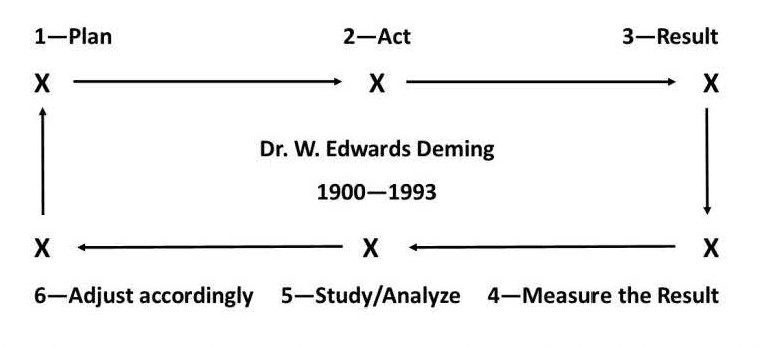 By Mike Monde
By Mike Monde
Chances are you have heard someone here at Ruppert ask you to “close the loop.” Also known as A Process of Continuous Improvement, we learned about it many years ago from a guy named Clyde Vadner and it has become part of our language and part of our culture. Here is a little bit about what it is and how we use it…
The History
Clyde was a fan of W. Edwards Deming, who was a professor of statistics and a consultant for private
businesses starting around the time of World War II. Deming’s ideas, one of which was Close the Loop, had a significant impact on post-World War II Japan, where a number of manufacturers applied his techniques widely and experienced unheard-of levels of quality and productivity as a result. Clyde preached Deming’s concepts to us as young, inexperienced managers and they quickly took hold. They have stood the test of time and we continue to use them today.
The Process
In a nutshell, “close the loop” is the process of continuously reviewing our plans and actions and making changes to improve our results.
Clyde explained that most people operate on the top of the loop only, that is they Plan, take Action and get a Result. The next day they start with another Plan and they continue to cycle through step 1, 2 and 3. Deming said, and Clyde taught us, that in order to continuously improve you had to complete the loop with steps 4, 5 and 6.
4: Measure the Result…Remember Deming was a statistician, numbers were important and measuring meant using numbers…hours, units, dollars, etc.
5: Study/Analyze… Look at the numbers, what do they tell you? Figure out what went well, and what needs work.
6: Adjust Accordingly… Keep what worked and lose or fix what didn’t to adjust the plan and start again with a new, improved plan.
How we use “Close the Loop”
Once you understand what Close the Loop means, use the language (“close the loop”) to challenge yourself and others around you to try it and look for plans and problems where you can implement it to get better. Here are a couple of examples of how our people have seen “close the loop” in action.
 Victor Rodriguez – North Carolina Landscape Project Manager
Victor Rodriguez – North Carolina Landscape Project Manager
“Executing smaller scale mockups of proposed paver designs is one way that we are closing the loop. In addition to getting feedback from the customer, we are able to analyze material quantities, placement, and process times. Having this information allows us to adjust our installation plan to produce a high-quality result and reduce the potential for scheduling issues with other trades involved in the project.”
 Jillian Gottlieb – Laytonsville Maintenance Business Developer (formerly Asst. Field Manager)
Jillian Gottlieb – Laytonsville Maintenance Business Developer (formerly Asst. Field Manager)
“On one of our jobs, we often found ourselves finishing the details before the mowing was completed. Instead of leaving part of the crew idle, we decided to split up in the morning, leaving one man at this job to mow while the rest of the crew serviced other properties. We would reconvene at that property in the afternoon to complete the details and finish out our day. This small decision helped us to use our people more efficiently.”
Increased quality and efficiency are possible when we practice the Close the Loop process of continuous improvement. Now that you’re familiar with it, give it a try today!

